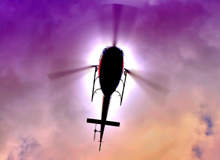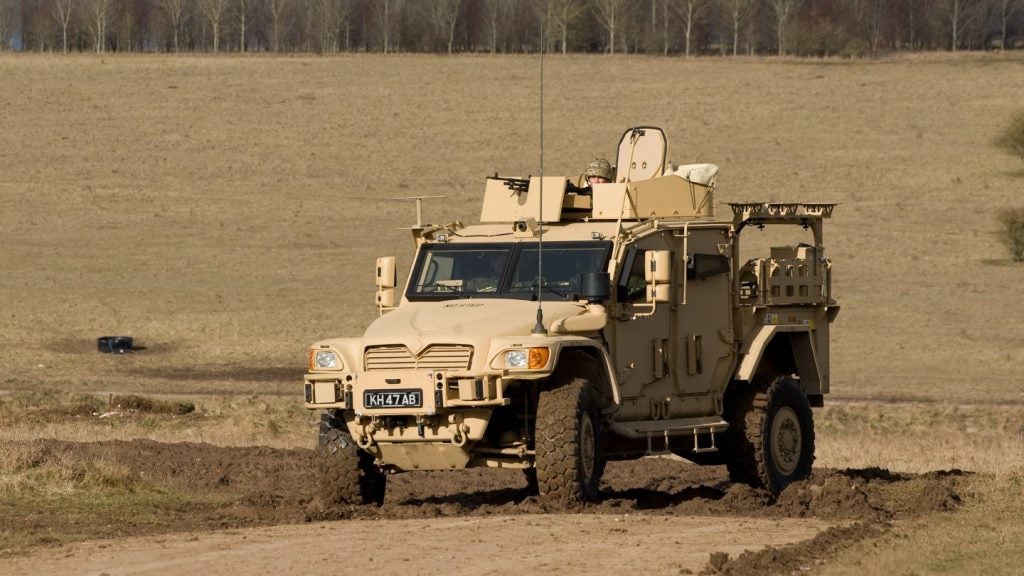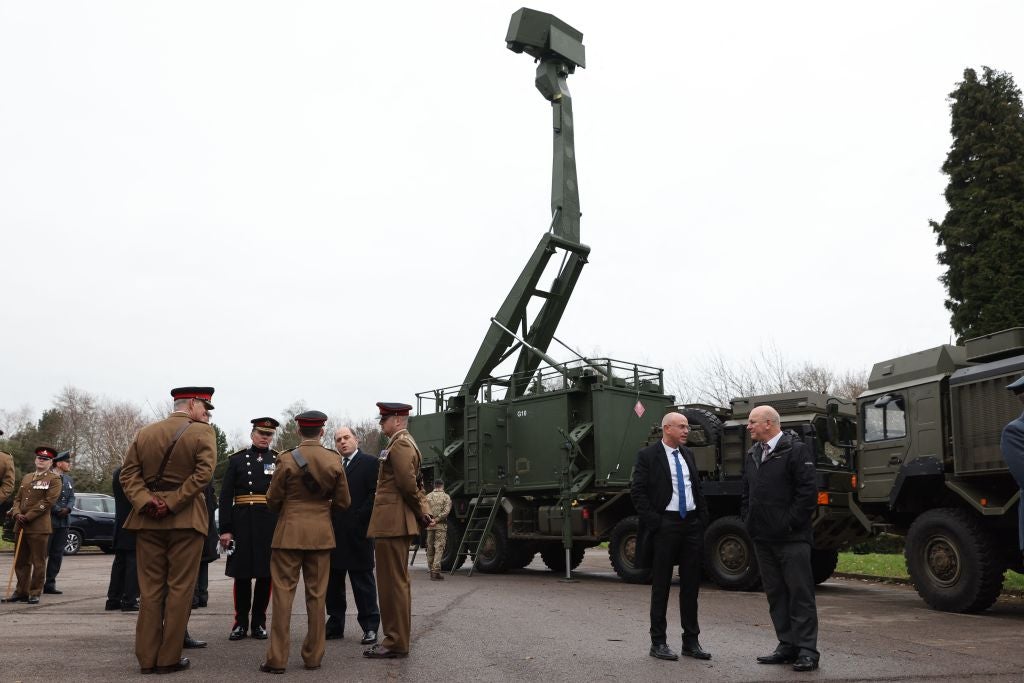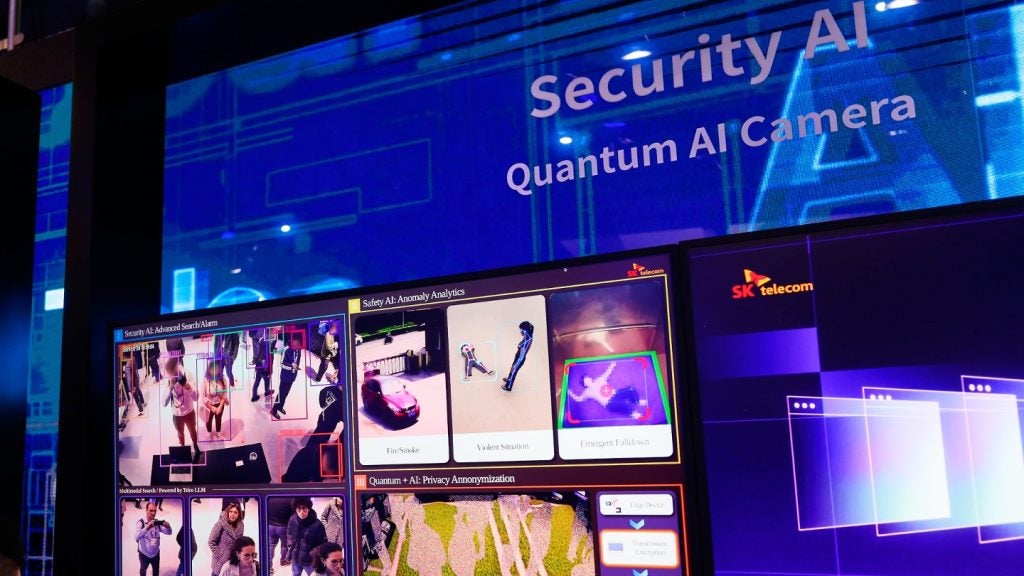
It may be a bold statement but the helicopter industry is sure to like what analysts such as Richard Aboulafia, vice-president of analysis at the Teal Group, are saying about the market. “Helicopters are the fastest-growing sector of the global military aerospace market at the moment and are the brightest spot in the entire aerospace business,” he says. Thanks to the war in Iraq, and Afghanistan, where road travel is particularly troublesome due to improved explosive devices (IEDs), the military is pushing ahead with helicopter upgrades and new builds at rates rarely seen before.
It is not just the conventional helicopter we are talking about. Just like they have done with the development of unmanned flight, these wars are spurring R&D on unmanned helicopters. In January 2010, Lockheed Martin and Kaman Aerospace announced the launch of an unmanned military helicopter. Both companies said that they had already demonstrated to the capability of an unmanned helicopter to US Marine Corps resupply troops in Afghanistan.
The announcement followed Sikorsky’s launch of a $1bn business venture that will promote new helicopter technology, including unmanned Black Hawks. Chris Van Buiten, director of Sikorsky Innovations, said the unmanned version of the Black Hawk could be used when the mission was “really dull” or “really dangerous”. Sikorsky intends to have a model of the unmanned Black Hawk ready during 2010, with introduction planned for 2015, at an estimated cost of £10.6m each.
From civil to defence helicopters – Eurocopter
Eurocopter, the world’s top helicopter manufacturer, says that the world economic crisis has caused a sharp order decline in the civil market for light helicopters. The rise in military demand, however, has compensated for this. Eurocopter has enjoyed its second-best year in its history in terms of orders. Deliveries remained stable with 558 new civil and military helicopters supplied in 2009, almost matching the peak level of 2008. The company says it expects this trend to continue through 2010 with no sign of any recovery in civil orders, but continuing strong demand from defence departments.
Eurocopter has a turnover of €4.6bn, and a 52% market share in the civil and parapublic sectors. It says that thanks to success in 2009, it hopes to advance various new projects in 2010.
How well do you really know your competitors?
Access the most comprehensive Company Profiles on the market, powered by GlobalData. Save hours of research. Gain competitive edge.

Thank you!
Your download email will arrive shortly
Not ready to buy yet? Download a free sample
We are confident about the unique quality of our Company Profiles. However, we want you to make the most beneficial decision for your business, so we offer a free sample that you can download by submitting the below form
By GlobalDataThese include the X4, which the company hopes will prove a successor to its Dauphin light helicopter; the aerial armed scout, which it is developing in conjunction with Lockheed Martin and is designed to meet the US Army’s capability gap in aerial reconnaissance and security during combat operations in current and future conflict, and the future transport helicopter, a heavy lift helicopter, designed to carry personnel, light armoured vehicles, and/or cargo, with good performance under a wide range of conditions including hot weather and high altitudes, both of which reduce helicopter performance due to thinner air.
In February 2010, Eurocopter’s CH-53GA, medium-lift military transport helicopter, an updated version of the Sikorsky CH-53, which has been in service with German armed forces for around 30 years, successfully completed its maiden flight. Due to the upgrades, the helicopter’s service life has been extended to 2030. The first deliveries are expected in 2011 allowing the German military to deploy the CH-53GA with its state-of-the-art equipment for international missions, such as Afghanistan.
Bell
Bell of the US says its commercial sector suffered during the recession. However, in February 2010, it launched the light, twin-engine Bell 429, which the company described as the “world’s newest helicopter”, at the Singapore Air Show. The helicopter can be used as an air ambulance, offshore oil and gas support aircraft, VIP transport or for other applications. The company says that it has commitments, as opposed to firm orders, for 300 of the 429s, but still put many of its commercial development activities on hold during the recession.
In 2009, the company generated record cashflow, thanks to military orders and cost-cutting efforts and had a record backlog of military orders. On top of this, it is increasing production of the V-22, the world’s first production tilt rotor, which combines the vertical performance of a helicopter with the high speed and range of a fixed-wing aircraft, and the new Marine H-1 helicopters, an upgrade of the UH-1Y, a workhorse of military combat assaults as well as humanitarian evacuations.
Bell delivered 20 V-22s last year and plans to deliver 28 in 2010, while receiving orders at a rate of 35 a year. Production is expected to peak at 40 V-22s in 2013. After delivering nine new Marine helicopters last year, the company expects to deliver 20 in 2010. It expects to boost production to 28 a year in 2014. In January 2010, Bell said that it expected to see its annual revenue climb by around 16%, thanks to strong demand from the US military. It also envisaged a stabilisation of demand from commercial clients in 2010 after a sharp drop during the financial crisis before returning to growth in 2011 and 2012.
In January 2010, the US Defense Department asked Congress for more than $9.6bn in the 2011 defence budget for various rotary-wing aircraft, including $2.7bn for the V-22.
Boeing
Boeing has also benefited from increased orders from the military. In January 2010, the company said that fourth-quarter revenue at its Defense, Space & Security business rose by 6% to $8.5bn on increased military aircraft deliveries and higher volume in services. Boeing Rotorcraft Systems supplies transport and combat helicopters and tiltrotor aircraft. Products include the AH-64 Apache, the CH-47 Chinook and the V-22 Osprey, which it is producing with Bell Helicopter.
In October 2009, Boeing announced the first flight of its AH-6i light attack / reconnaissance helicopter. In December 2009, subsidiary Boeing Defence UK announced that it delivered the first of eight converted Chinook mk3 helicopter to the Royal Air Force. The others are due to be delivered in 2010 and will support operational needs in locations such as Afghanistan.
AgustaWestland
AgustaWestland is another company with military orders rolling in. This year it will continue to focus on developing its Lynx Wildcat helicopter. The multirole military helicopter, which made its maiden flight at AgustaWestland’s Yeovil facility in the UK in November 2009, is due to enter service in 2014.
Meanwhile, in January 2010, the British armed forces received the first four of 12 upgraded Lynx Mk9 helicopters for use in Afghanistan. New equipment includes a considerably more powerful engine that enables operation in the challenging hot and high conditions of Afghanistan.
Sikorsky
As well as working on the unmanned Black Hawk, Sikorsky is currently developing the next-generation CH-53K heavy-lift helicopter for the US Marines. It is due to make its first fight in 2011, and first deliveries are expected in 2015. In January 2010, Sikorsky opened a new plant in Connecticut, which will produce helicopter components including swashplates and rotor hubs, for the CH-53K. In December 2009, Sikorsky’s S-76D medium twin civil helicopter entered production with deliveries due in 2011.
Sikorsky won two US military helicopter contracts worth a total of $1.52bn in January. The first contract, totalling $923.7m, provides funding for the fourth year of a multiyear contract for a range of army Black Hawk helicopters. The second contract, for $600.7m, covers the fourth year of funding for various navy MH-60 Sea Hawk helicopters.
New helicopters boost GSE sector
Suppliers of ground support equipment (GSE) are already benefiting from the launch of such new helicopters.
Cyril Pidoux, sales manager at Guinault of France, says the company is gaining custom from the introduction of the NH90 twin-engine, multirole military helicopter, manufactured by NHIndustries (owned by Eurocopter). It requires specific ground power units (GPUs), and Guinault, which is based in Saint
Cyr En Val, specialises in supplying 400Hz and 28VDC mobile GPUs, as well as air start units, frequency converters and air conditioning units.
AXA Power ApS vice-president Poul Elvstrøm says his company is also benefiting. Elvstrøm says the introduction of a number of new aircraft, such as the NH90 helicopter, which incoporates new technology, is helping to drive the market for ground support equipment.
For Bell, military aircraft sales accounted for 39% of its $2.8bn in revenues in 2009, compared with 24% for commercial helicopters. The rest was for parts, repairs and other services.
One of the largest contracts likely to be drawn up in 2010, however, will be the UK Ministry of Defence and Department for Transport’s £6bn contract for search and rescue services to a consortium called Soteria. The group is composed of Thales UK and helicopter operator CHC, which is already doing search and rescue from four UK bases. Soteria plans to use the S92 helicopter made by Sikorsky.
At present, 40 Sea Kings carry out the UK’s coastal and inland search and rescues from 12 bases, however, Soteria is likely to use between 25 and 30 helicopters that will be faster and require less maintenance. Soteria will provide the helicopters and crews as well as managing the bases and servicing, during the contract which is due to last for 25 years from 2012.
Growing demand in Asia
New markets are also opening up for helicopter manufacturers. Boeing, for example, says it is hoping to make a breakthrough in the Indian market in 2010. It has offered its AH-64D Apache attack helicopters and CH-47F Chinook heavy-lift transport helicopters to the Indian Air Force, which is seeking to acquire 22 such aircraft. In south-east Asia, it is hoping to sell its Chinook aircraft, often used in disaster relief, to Indonesia and other disaster-prone countries in 2010.
is helping to drive the market for ground support equipment.”
Teal’s Aboulafia says Asia could be a large growth area for helicopter orders in 2010. The year has already begun on a strong note with Taiwan’s controversial $6bn request for defence equipment from the US. The deal includes an order for $3.1bn worth of UH-60M Black Hawk helicopters.
In February, Singapore-based Eurocopter South-East Asia (ESEA), a subsidiary of the European helicopter manufacturer, said it hoped to deliver 30 helicopters to the region in 2010, up from 23 last year. The company said that in 2009 it achieved major breakthroughs in Thailand, winning a major contract from the Royal Thai Police and Vietnam, where it will supply the first EC 225 helicopter to an offshore operator.
With the help of Asia, the outlook for the helicopter sector appears to be bright. Afghanistan is likely to fuel demand for years to come and orders from Asia have only just begun – rapid economic growth is predicted to fuel even more demand from the civil and military sectors here.






